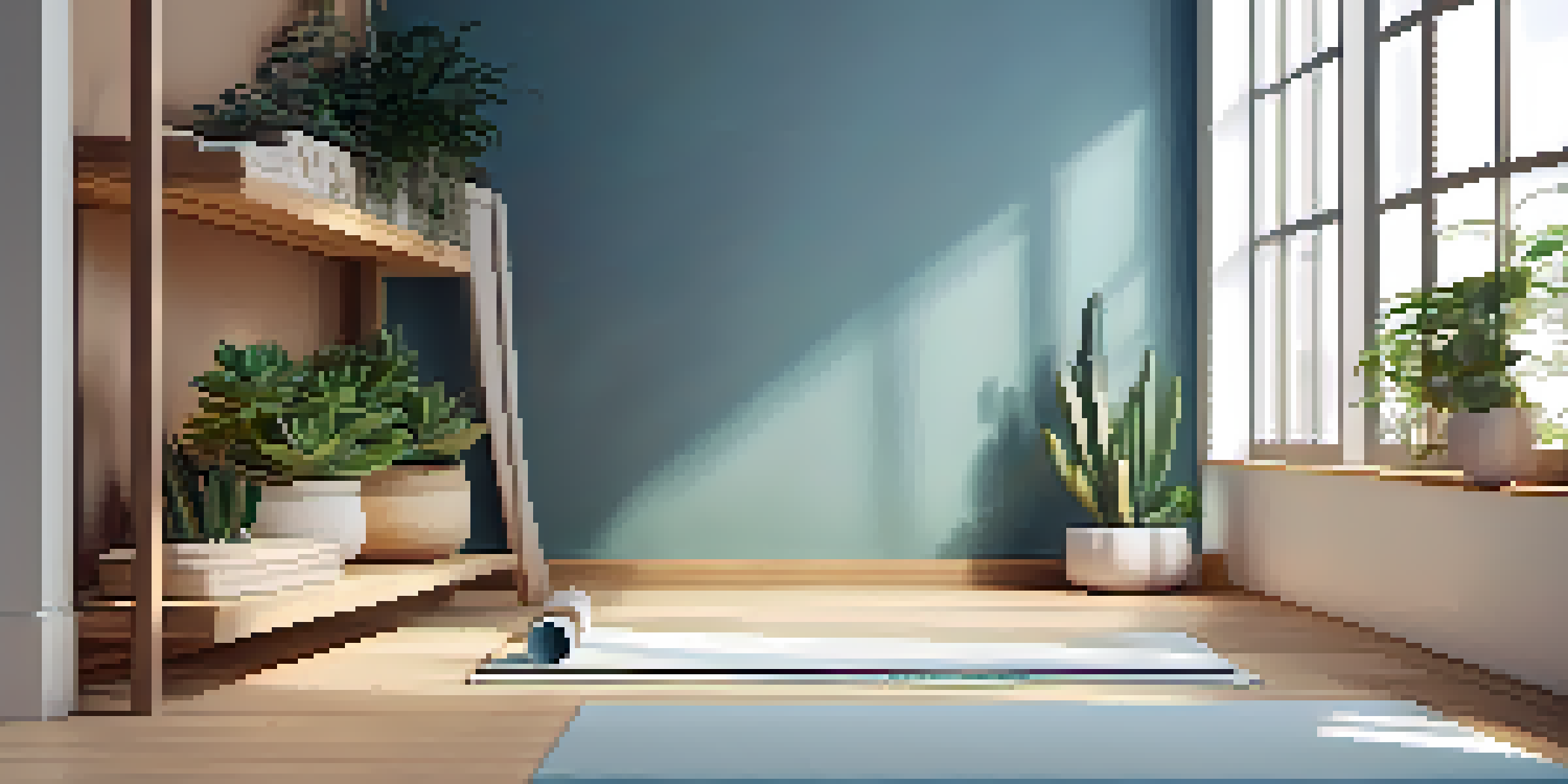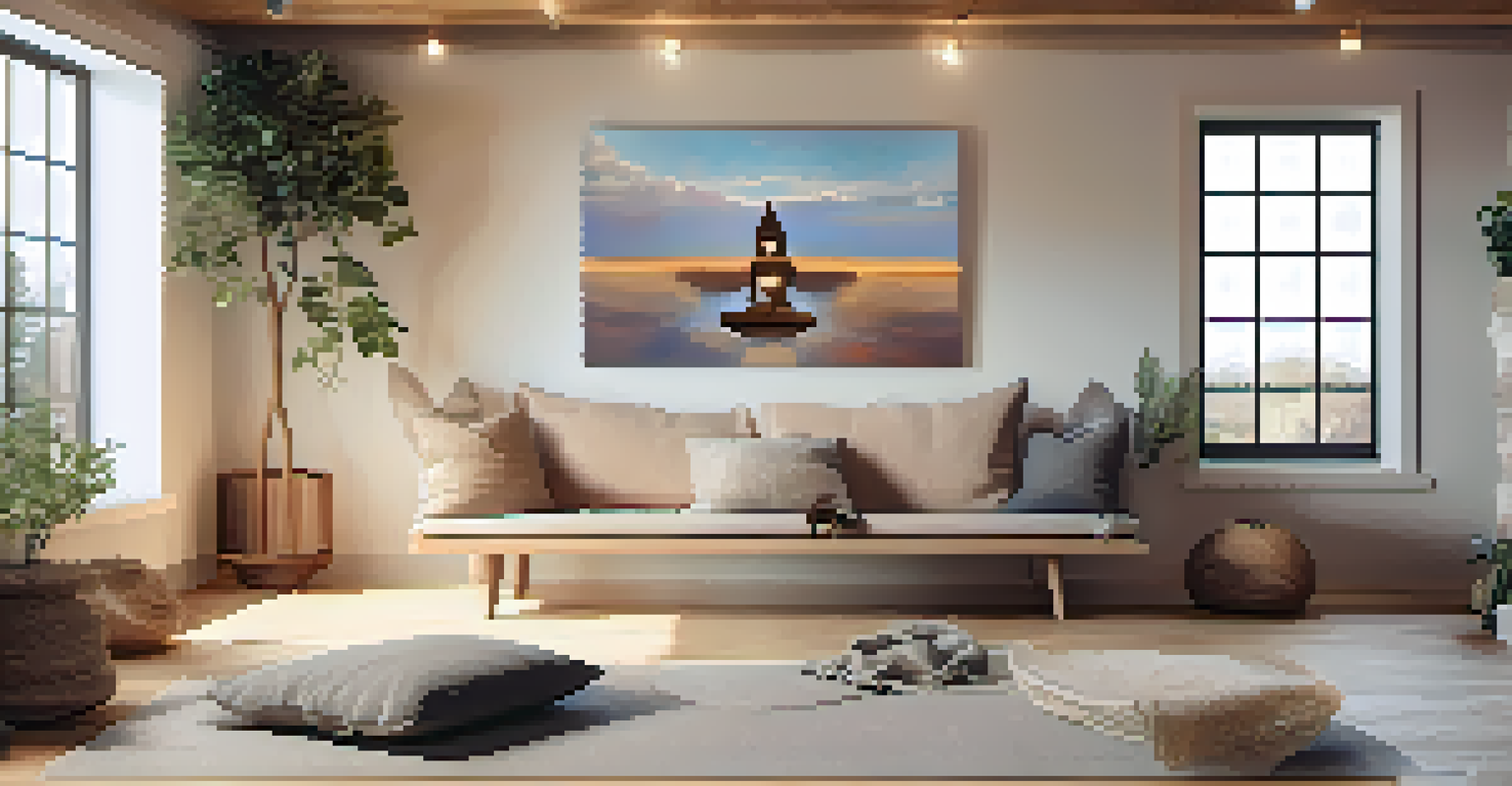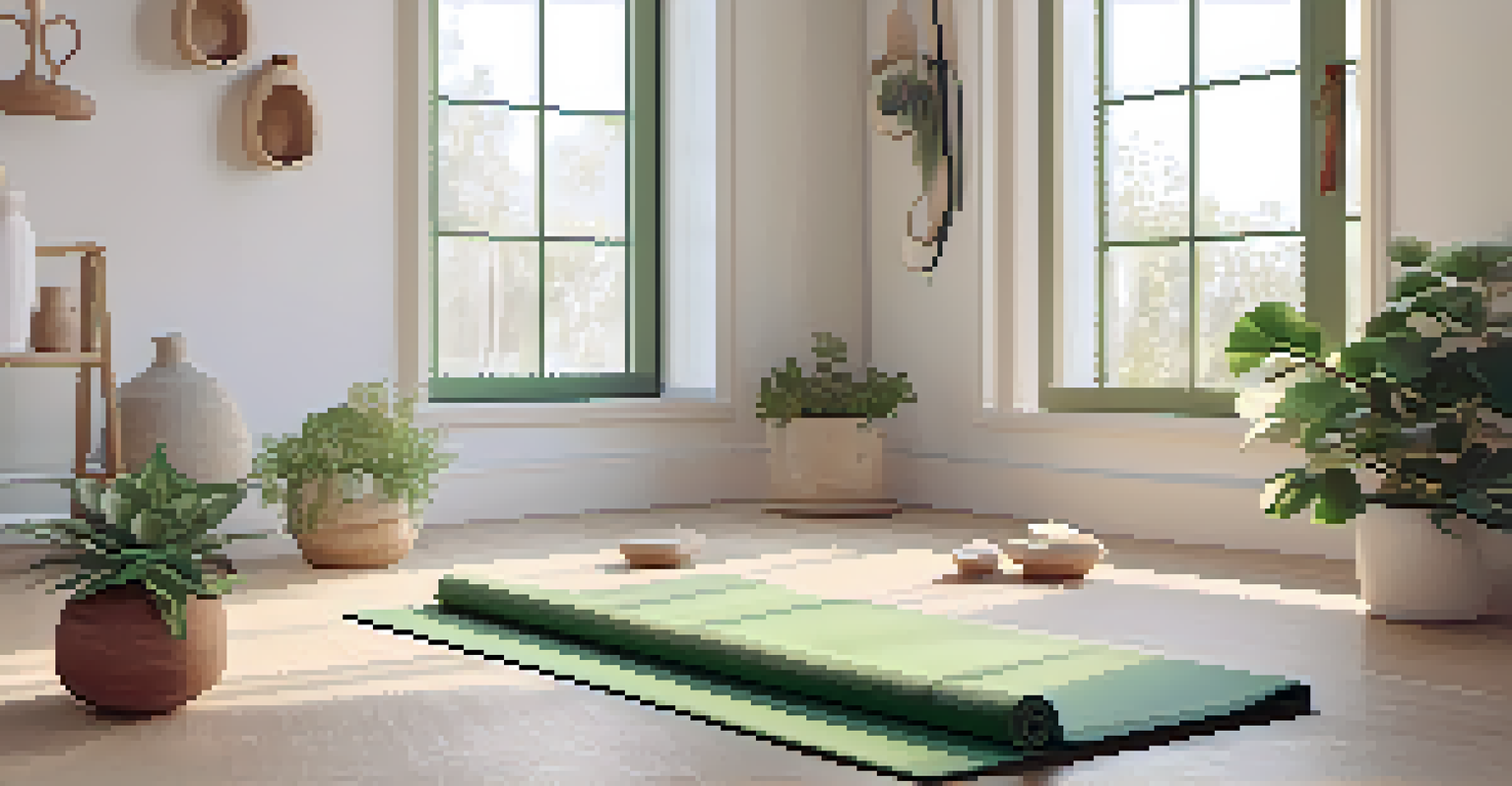How to Set Up a Yoga Space for Physical Wellness

Choosing the Right Location for Your Yoga Space
The first step in setting up your yoga space is to choose the right location. Ideally, look for a quiet area in your home where you can practice without distractions. A room with natural light can enhance your experience, making it feel more open and inviting.
Yoga is not about touching your toes, it is what you learn on the way down.
Consider the flooring as well; hardwood or carpet can provide comfort and stability during your practice. If you don’t have a dedicated room, a corner of your living room or a balcony can work just as well. Keep in mind that the space should feel personal and comfortable to you.
Lastly, ensure that the area is well-ventilated. Fresh air can help you feel more at ease and focused during your yoga sessions. A good environment can significantly impact your practice, so take the time to find a spot that suits you.
Decluttering for a Calm and Inviting Atmosphere
A cluttered space can lead to a cluttered mind, which is the opposite of what you want as you prepare for your yoga practice. Start by removing any unnecessary items from your chosen area to create a serene environment. This could mean clearing away furniture or simply organizing your yoga props.

Think about minimalism; fewer items can make your space feel more peaceful and open. You might even consider using storage solutions like baskets or shelves to keep things tidy. A clear space allows you to focus solely on your practice and inner peace.
Choose a Serene Location
Selecting a quiet, well-ventilated area with natural light is essential for an inviting yoga space.
Moreover, adding a few personal touches, like a plant or a calming picture, can help make the space feel inviting without overcrowding it. Balance is key—aim for simplicity that reflects your personality while maintaining tranquility.
Incorporating Natural Elements for Serenity
Bringing nature indoors can enhance your yoga space significantly. Plants not only add beauty but also improve air quality, making your environment more refreshing. Consider adding easy-to-care-for plants like succulents or peace lilies that thrive in indoor settings.
The quieter you become, the more you can hear.
You can also incorporate natural materials into your yoga space. Think about using wood, bamboo, or stone elements for your decor or yoga props. These materials can create a grounding atmosphere that connects you to nature as you practice.
Additionally, consider the lighting in your space. Natural light is ideal, but if that's not an option, using soft, warm artificial lighting can create a soothing ambiance. Lighting plays a crucial role in setting the mood for your practice.
Selecting the Right Yoga Mats and Props
Your yoga mat is your sanctuary during practice, so it’s essential to choose one that suits your style. Look for a mat that provides good grip and cushioning for your body. The right thickness can help absorb impact and offer comfort, especially during longer sessions.
In addition to a mat, consider investing in props like blocks, straps, and bolsters. These tools can enhance your practice, helping you achieve better alignment and stability in various poses. They’re particularly helpful for beginners or those looking to deepen their practice.
Declutter for Peace of Mind
Creating a minimalist environment helps eliminate distractions, allowing you to focus on your practice.
Don’t forget about a comfortable blanket or cushion for meditation or relaxation poses. Having the right equipment can create a more enjoyable and effective yoga experience, allowing you to focus better on your movements and breath.
Creating a Calming Color Palette
The colors in your yoga space can significantly affect your mood and energy levels. Soft, calming colors like blues, greens, and earth tones can promote relaxation and focus. Think about painting the walls in gentle hues or adding decor in these shades to create a soothing atmosphere.
You can also use textiles like curtains, cushions, or rugs in calming colors to reinforce this theme. Mixing different textures can add depth to the space while keeping the overall feel light and tranquil. Aim for a cohesive look that resonates with your sense of peace.
If you prefer bolder colors, consider using them sparingly as accents rather than the main theme. This way, you still get the vibrancy without overwhelming the senses, creating a balanced and inviting yoga space.
Adding Personal Touches and Inspiration
Your yoga space should reflect your individuality and inspire you to practice regularly. Think about adding personal items that hold meaning to you, such as photos, crystals, or favorite quotes. These elements can provide motivation and create a deeper connection to your practice.
You might also consider incorporating art that resonates with your yoga journey, whether it’s a calming landscape or an abstract piece that brings you joy. The right artwork can uplift your spirits and bring a unique flair to your space.
Personalize Your Space
Incorporating personal touches and inspiration can make your yoga area feel uniquely yours and motivate you to practice regularly.
Creating a vision board with your yoga goals can also serve as a source of inspiration. It’s a great way to remind yourself of your intentions and keep you motivated as you grow in your practice.
Establishing a Routine for Consistent Practice
Setting up your yoga space is just the first step; establishing a routine is crucial for reaping the physical benefits of yoga. Try to designate specific times in your week for practice, treating these sessions as important appointments. Consistency is key to developing a strong practice.
You might also consider creating a warm-up ritual when you enter your yoga space. This could include lighting candles, playing soothing music, or even a few moments of mindfulness to prepare your mind and body. Rituals can enhance your experience and signal to your brain that it’s time to practice.

Lastly, be flexible with your routine. Life can be unpredictable, so allow yourself the grace to adapt your practice schedule as needed. The important thing is to keep returning to your space, nurturing both your physical wellness and mental clarity.